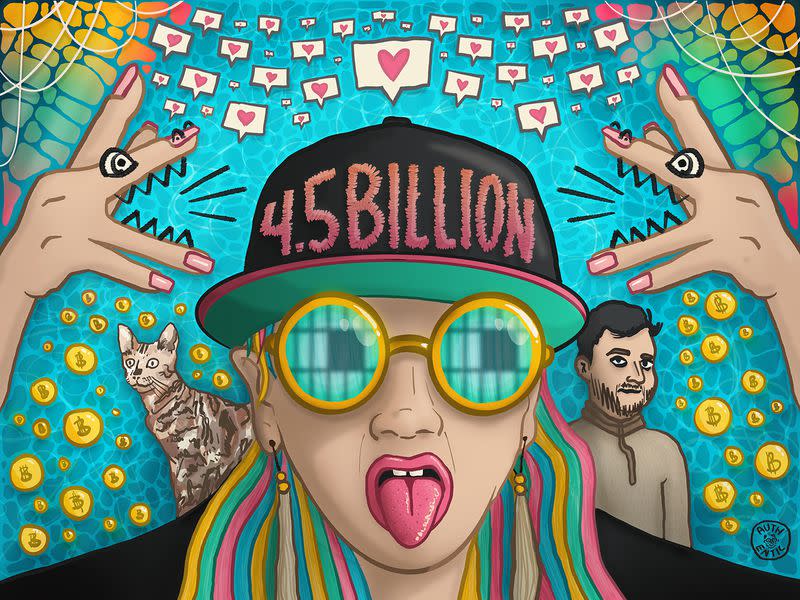Most Influential Artist: Bryan Brinkman
Animator Bryan Brinkman Zooms in from Dubai, where he’s part of a delegation of non-fungible token artists, collectors, and platform executives. “There's people from SuperRare, Nifty Gateway and we're all spreading the word of NFTs here,” Brinkman, 37, says. “They're treating us like diplomats.”
Read more: Presenting CoinDesk's Most Influential 2022
Normally based in New York, Brinkman finds time to talk about his NFT work between dinner with a sheikh and a visit to the Louvre Abu Dhabi. Wearing a Mickey Mouse-covered shirt by the comic artist Jeffrey Brown, he describes artistic influences like Don Hertzfeldt and Bill Plympton. They taught Brinkman that “It didn't matter if you drew like Disney, you could still tell compelling stories that made people feel” – a practice he’s brought into the NFT space.

How and when did you first learn about NFTs?
I first discovered NFTs in December 2019, because an artist that I'm a fan of, Killer Acid, was selling his work on SuperRare. I had been spending years turning my digital art into physical pieces for galleries, then I discovered that you could just sell digital work as is. I applied to SuperRare the next month, got on, and fell down a deep rabbit hole.
What the first piece of NFT art you created?
The first piece I minted on SuperRare was called “Explode.” It’s a short, looping animation of colorful clouds exploding. I created it to show what I wanted to bring to the space, which was traditional animation and colorful imagery. I also wanted this entering-with-a-bang aspect … this explosion of motion and colors.
Why did you decide to make that piece an NFT?
When I first joined the space, I got really into thinking about how you could get the most out of the limited file size allowed. For that piece, I thought, how can I create something that someone can look at for a minute and still feel like they're experiencing it?
That piece also stripped away all my previous work and started fresh. You see the colors and clouds play a role in almost all my NFT pieces that come after. I wanted to reduce everything to a beginning and build from there.
What were some of your main considerations when creating your “Most Influential” portrait of Razzlekhan and Lichtenstein?
Almost every video I could find of Razzlekhan was like a car accident. Her content was so cringy. But underlying it was her being a part of a massive scheme. The fact that she was creating all this content while knowingly having stolen all this money, and putting herself out there in such a public way, I found extremely fascinating.
I tried to embody that in-your-face energy and show the opulence that she expresses, whether it's her extremely expensive cat or her quest for attention on social media. I'm trying to include that imagery even though it’s a facade to a degree. But who knows? We haven't really heard from her since it all happened. There's still a very big mystery to her in my mind.
How about Lichtenstein?
He's even more of a mystery. He seems so subdued and quiet. In my piece, I have him in the background. Whether he was the mastermind behind the project or not, once the story broke, he became an afterthought, a background supporter. He was a subject in her videos, but he was never the main character.
What lessons have you personally taken from their story?
What draws me into their story is the mystery. How could these people, who on the outside seem aloof and goofy, be behind one of the biggest heists? There's a disconnect that still puzzles me. Why would you steal all this money, then draw so much attention to yourself?
Since Razzlekhan and Lichtenstein, we've seen the space have so many other bad actors that lost billions of dollars. Razzlekhan almost seems like a distant memory – the beginning of this year’s decent into fraud and deception.
Where do you see yourself going in the NFT art world moving forward?
My goal when I joined the space was to experiment with all the media it provides. Since then, I've done everything from animation to generative and programmable art. I look at what the next wave of technology will be, and I'm excited to keep pushing in these new directions.
